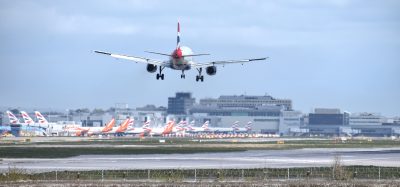Which technologies are disrupting the airport industry in the post-crisis recovery
- Like
- Digg
- Del
- Tumblr
- VKontakte
- Buffer
- Love This
- Odnoklassniki
- Meneame
- Blogger
- Amazon
- Yahoo Mail
- Gmail
- AOL
- Newsvine
- HackerNews
- Evernote
- MySpace
- Mail.ru
- Viadeo
- Line
- Comments
- Yummly
- SMS
- Viber
- Telegram
- Subscribe
- Skype
- Facebook Messenger
- Kakao
- LiveJournal
- Yammer
- Edgar
- Fintel
- Mix
- Instapaper
- Copy Link
Posted: 4 May 2022 | Rezcomm | No comments yet
Here we will uncover the post-crisis technology solutions that have had the biggest impact and their role in the path to recovery for the aviation sector in 2022 and beyond.


Over the last couple of years, we have experienced a surge in design advancements and disruptive technologies in airports as the industry attempts to overcome the various challenges brought by the pandemic. With changing consumer behaviours and economic constraints, airports have had no choice but make a conscious effort to do things differently.
Here we will uncover the post-crisis technology solutions that have had the biggest impact and their role in the path to recovery for the aviation sector in 2022 and beyond.
What should the future of aviation look like post-covid?
A recent poll at the International Airport Review Online Summit asked participants’ what areas do you think airports should be innovating in?‘ 53% said passenger experience.
Airports know that recovery begins with the customer and that changing expectations regarding the passenger experience will shape the future of the aviation sector. So it’s no real surprise that this is the primary focus for most airports. But the question is, which disruptive technologies will improve the passenger experience?
The path to recovery with disruptive airport technologies
While improving the passenger experience with digital technology is paramount, disruptive technologies in airports must also drive efficiency and earnings. After all, airports are commercial businesses, and any innovation needs to provide a net gain in the form of either higher income or lower costs. Innovation needs to support the business goals (something we’ll touch on later) and not just be done for the sake of it.
Here are some of the post-crisis technology solutions ticking all of the boxes…
Contactless airport technology
The trend for a contactless passenger experience in airports has been around for several years, but the COVID-19 crisis has rapidly accelerated its adoption. To minimise the spread of viruses and limit the surfaces passengers need to touch physically, many airports have implemented contactless technologies like Rezcomm’s Contactless Fast Track Booking and Queueless Journeys, which use e-ticketing on customers’ mobile devices.
While these disruptive technologies in airports have improved passenger safety and created a more seamless experience, they’ve also dramatically cut the wait and queuing times at all touchpoints in the airport and reduced the need for manual checks, improving efficiency andslashing costs simultaneously.
Biometrics at the airport
Biometrics go hand-in-hand with contactless technology by promoting frictionless travel and encouraging passengers to get ‘travel-ready’ before getting to the airport for a smoother and more seamless experience.
This post-crisis technology is something we expect to see develop over the coming years, with more airports adopting it to improve efficiency and empower passengers with greater control over their data. However, the deployment of this digital technology brings several challenges, and protecting passengers’ data is paramount.
In a recent panel session at the International Airport Review Summit, Suresh Khadakbhavi,
Assistant Vice President of the Innovation Lab at Bangalore International Airport, discussed using new biometric technologies and the importance of privacy by design. He explained that at Bangalore International Airport, “all the data resides with the passenger directly in a secure wallet that is fully encrypted. When the data is shared by the passenger to the airport, only the airport operator can actually open the data because it’s been addressed to that particular airport.“
Airport ecommerce
Both consumers and businesses have become more tech-savvy, and the growth of online shopping and ecommerce has soared since the beginning of the pandemic. However, this disruption in the market has been affecting the travel industry for some time, so airports must take advantage of its opportunities to remain competitive.
And we’re not just talking about selling flights, hotels, holiday packages, airport lounge and parking. There are also other valuable airport ecommerce opportunities to explore, such as:
- Duty-free products that are ordered online for collection at the airport, gate delivery or even home delivery
- Pre-order food and beverage, available for click and collect or gate delivery
- Airport tours and VIP experiences that encourage consumers to visit the airport as a destination in its own right (without taking a flight)
Airport ecommerce technology is crucial to ensuring a resilient recovery from the crisis, as it diversifies an airport’s offerings and unlocks new revenue. So, if a crisis strikes again and travel restrictions come into play, the airport can continue with some of its ecommerce activities to generate revenue.
Robotics & automation at the airport
Two of the biggest technologies disrupting the airport industry are robotics and automation solutions.
At the height of the pandemic, airports used disinfecting robots to ensure a clean and safe environment for passengers. But, as you’ll discover, airports can use robots and automation for so much more.
For instance, we’ve seen more and more airports invest in automated solutions, such as contactless customer service technology. This eliminates the need for customer support desks at the airport and, as a result, face-to-face contact. Instead, passengers scan a QR code, access an online support portal and get answers to their questions from an AI chatbot.
Additionally, automated technology allows airports to collect important passenger feedback in real-time from various touchpoints without needing employees there. If a passenger leaves negative feedback, airports can act in real-time to resolve any issues and deploy staff where required.
At the IAR Summit, panellists took discussions around automation and robots at the airport to the next level with talk of drones. Fran Kauzlaric, Innovation Lead at Brussels Airport Company, listed the many ways they were testing the use of drone technology for operational improvements at the airport, including detecting intruders, crash simulation, perimeter inspection and infrastructure inspection. He explained, “A number of things can really be transformed. We’ve been doing these things the same way for a really long time, and now we can use technology, not just to save costs, but also do it better and in a way that gives us more information than we had before.”
Reskilling your workforce
While disruptive technologies in airports, like those mentioned above, have the potential to improve experience, efficiency and earnings, it’s also vital to consider the impact on the workforce. Back in 2017, the McKinsey Global Institute estimated that as many as 275 million workers (or 14% of the global workforce) would need to switch jobs or acquire new skills by 2030 because of automation and artificial intelligence.
The rapid adoption of disruptive technologies in airports during the pandemic has made the need to reskill workers even more apparent.
A simple example is moving from offering on-site airport customer service to remote. Airport operators will need to reskill employees to manage customer relationships effectively in a remote setting.
Airports will also likely need to reskill their workforce to use new airport technologies. It’s, therefore, essential they work with a tech partner, like Rezcomm, that offers sufficient training and ongoing support.
5 & 10-year plans
During the pandemic, airports were forced to focus on the immediate situation, implementing technologies to make the airport a safe environment for passengers and boosting revenue wherever possible. But as we move into this recovery period, they must now figure out how postcrisis technology fits into their 5 and 10-year plans.
Along with adapting to changing customer behaviours, the operational impact of such changes and financial implications post-pandemic, airports must form resilient and robust innovation strategies so that if another crisis strikes, they’re in a much better position than before.
Any technology adopted must meet the requirements of 5 and 10-year plans to be viable for cash-strapped airports. As Karin Gylin, Head of Strategic Development and Innovation at Swedavia AB, rightly said in the IAR Summit discussion “There’s no point in building something that needs to be redone in 2 years.” For post-crisis technology to be worth disrupting the aviation sector, it needs to be sustainable, futureproof and serve long-term benefits.
Learn more about post-crisis technology
As you can see, there are many benefits of these disruptive technologies in airports, and they provide endless opportunities for airports to recover and thrive. However, it pays to have the right airport technology partner to support you. So book a meeting with our team to discover how Rezcomm will help your airport implement new digital technologies and ensure a resilient recovery.
Related topics
COVID-19, Information technology (IT), Passenger experience and seamless travel, Terminal operations, Winter operations


















